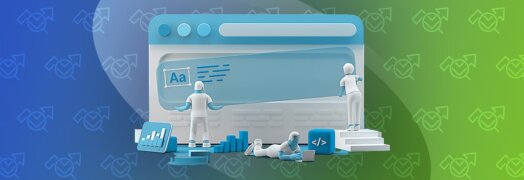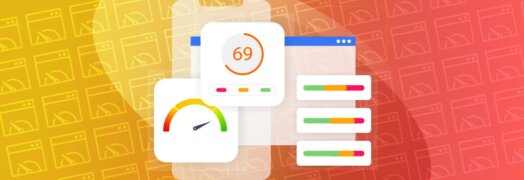What Is UX Design?
The user experience or UX refers to how people feel when navigating a website, using a mobile app or otherwise interacting with a company’s digital products or services. UX design pulls from aspects of branding, design, sociology, psychology, and marketing.
Good UX design asks the question: What visual solution/layout will provide a smooth and pleasant experience for my customers?
An intuitive, easy-to-use experience helps to create brand loyalty, customer satisfaction, and quality assurance.
What Attributes Are Needed for Good UX Design
Vitruvius, a renowned Roman architect and engineer from the 1st century BC, wrote the first-ever book on architecture and design, De architecture. In his book, he stated that good design must have all three of these attributes:
- longevity
- usefulness
- aesthetics
These qualities are as important today as they were a millennia ago.
Let’s take a look at how these three design pillars translate into great B2B website design today.
Tip #1: Create a B2B Website That Has Staying Power (Longevity)
Technology changes fast, and B2B website design trends are no different. When designing and building a B2B website it’s best to think about how you will be using the site right now, and how you will be using it several years down the road. This means your website needs to be flexible. Being able to adjust and make small updates to fonts, colors, and graphics on the front end is extremely important for website longevity. A flexible website is cost-effective, easy to use, and accommodates content updates.
Your website is a powerful marketing tool. Make sure to build out design modules/layouts that will achieve future marketing goals. Things like landing pages, company announcements, or future product/service rollouts can sometimes be overlooked when trying to get a new B2B website up and running. Take the time to look at the big picture so that you can fully utilize your website now, and several years into the future.
Read more: FAQ on B2B website design.
Tip #2: Create B2B Website Content That Is Useful and Relevant
Clients come to your website to learn more about your product or service, but they may also be coming to your site to get information about your industry or other types of general info. Having content on your B2B website that presents you as a knowledgeable, industry leader ensures your company stands out in your market.
Evergreen content is search-optimized content that is continually relevant and stays “fresh” for readers over a long period of time (Source).
There are many types of evergreen content, but a few examples include:
- How-to guides
- Case studies
- Tips and tricks
- Questions and answers
- Glossaries
- Interviews
The key distinguishing factor between evergreen content and timely content is that search volume should stay relatively the same – or even grow – with evergreen content. With timely content, search volume is likely to spike and then crash once it’s no longer relevant.
Utilizing evergreen content on your site helps with SEO and boosts traffic to your site—while also presenting you as a trust-worthy authority within your industry.
Tip #3: Create a Great First Impression Through Website Aesthetics
Users typically form their first impression within 5 seconds of being on your website. Having a professional look and feel, as well as a clear, concise message are very important to getting potential clients to take the next step in the buying stage.
Keep the below items in mind when designing:
Intuitive Navigation
Easy navigation features should be a top priority when creating a new B2B web design. By adding simple, responsive navigation toolbars and menus, you create an intuitive user experience.
A Clear Call-To-Action
Focus on the benefits to the user—and keep the message short and sweet. More importantly, make sure that your users can find your CTA — strategic use of color, type, and placement make your call-to-action stand out.
Read more: How to tell if your B2B website design is effective.
Informative Content
Content provides information to educate customers, and search engines, about your company and service or product offerings. Informative content can boost SEO and your business’s credibility.
Good User Flow
By creating a clear path for your users, you make it easy for them to do things like request a demo, read up on the latest industry news, and navigate to your product or service offerings.
Speedy Load Times
Speed matters significantly for site ranking and organic search. Site speed is one of the signals used by Google’s ranking algorithm. Plus, if a client has to wait too long for a page to load, they will most likely click away.
The Right Color Scheme
Choosing the right color combination for your B2B web design is important on many levels. For your content to be legible on various screen sizes, resolutions, and brightness, you need to consider color contrast and color theory.
These three design pillars will help you harness the power of good UX design and effectively convey your brand’s message, create conversions, and gain retention.



